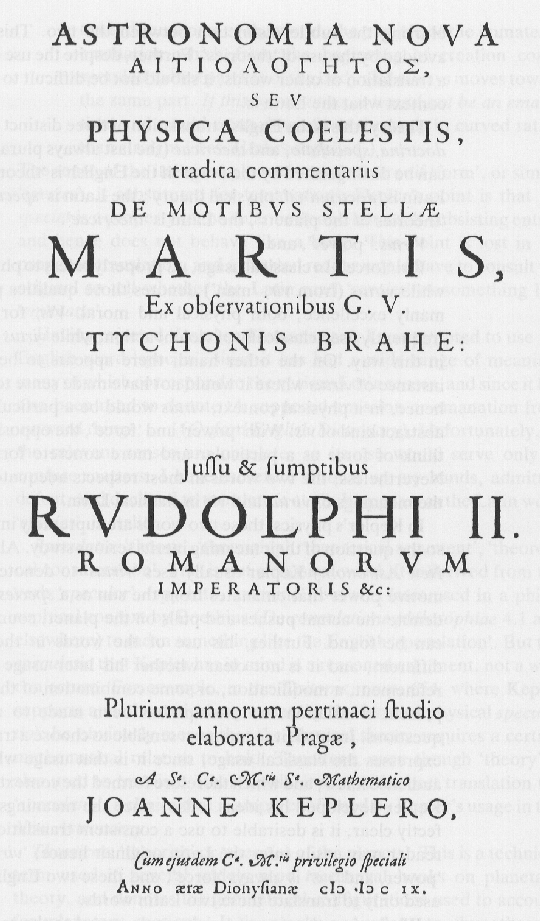Kepler's Astronomia Nova

Title page of Kepler's New Astronomy ( Astronomia Nova ). The book was completed in and published in Linz in 1609. Buried deep in this at times very mystical book are Kepler's first formulation of his first and second Laws of planetary motion, which in modern parlance can be stated as follows:
- Planetary orbits are ellipses, with the Sun located at one focus;
- Planets move along their elliptical orbit with a speed such that a line segment joining the planet to the Sun sweeps equal surface areas in equal time intervals
Another important novelty to be found in the New Astronomy is Kepler's attempt to justify the above two Laws on physical grounds, by ascribing planetary motions to a form of magnetically-mediated action-at-distance. This insight is what led him to formulate planetary orbits in relation to the Sun, as opposed to the center of the Earth's orbit (or "mean sun"), and in turn to his first two Laws. This idea, interestingly, also led him to postulate a movement of axial rotation for the Sun, two years before telescopic observations of sunspots would establish solar rotation as an observational fact.
Bibliography:
Kepler, J. 1609, Astronomia Nova , trans. W.H. Donahue 1992, Cambridge University Press.
Stephenson, B. 1987, Kepler's physical astronomy , [1994 reprint, Princeton University Press].




-Written and last revised 20 December 1997 by paulchar@ucar.edu.
Copyright 1997, NCAR.

